The price of a Marin Hawk Hill 3 is not the amount of small change you would expect to find down the back of your sofa, however, at €2599 it does represent the ‘affordable’ end of the spectrum when it comes to buying a full suspension mountain bike. We take the top-of-the-line model 3 to the trails for a review, can its performance match the outrageous paint job.

Reading through the Marin Hawk Hill press release and website, one word keeps popping up – ‘fun’! It’s easy to see that Marin are not targeting the Hawk Hill at racers or STRAVA warriors, instead they are trying to attract riders who like to spend time on their back wheels. Let’s call them the jib culture, new school riders who get their kicks jibing off logs in the woods, manualing everything and trying to ‘out trick’ their riding buddies; measuring their fun in smiles, not seconds. One thing about the Marin that’s undeniably fun is the paint job, and we love it. The three-colour fade attracted huge amounts of interest on the trail, with many surprised when told about the budget price. Surprisingly, the 3 model is the most expensive in the Hawk Hill range, with a 1 and 2 model priced at a bargain sounding €1,599 and €1,999 respectively. With 27.5 inch wheels and 130 / 120 mm of travel, the Hawk Hill sits in an increasingly niche category as 29ers swamp the trail sector, but do the smaller wheels suit the bikes target market?
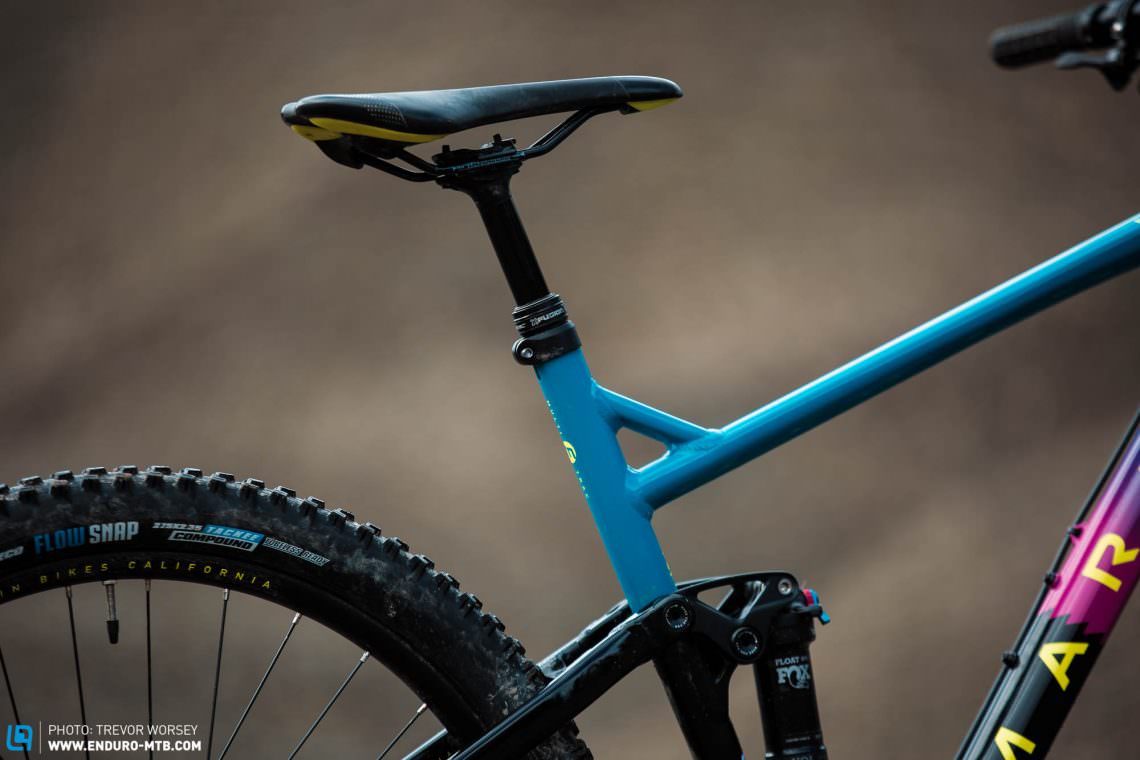
Specification of the Marin Hawk Hill 3
At €2599, we cannot expect any top-of-the-line components, however Marin has made a really good job of getting most of the basics right. The frame is nice, made from 6061 aluminium the frame feels more premium than expected. Importantly, the suspension and brakes are well-chosen. The Marzocchi Bomber Z2, 27.5 with 130 mm of travel offers a basic range of low speed compression and rebound adjustment from the new RAIL damper. The rear shock is a Fox Float DPS performance series that controls the 120 mm of travel. Brakes are the basic but powerful Shimano MT420 4 pistons, running a 203/180 mm rotor.
Marin Hawk Hill 3 2020
€ 2,599
Specifications
Fork Marzocchi Bomber Z2 130 mm
Rear Shock Fox FLOAT DPS Performance 120 mm
Seatpost X-Fusion Manic 150 mm
Brakes Shimano MT420 203/180 mm
Drivetrain Shimano SLX 32
Stem Marin 3D Forged Alloy 35 mm
Handlebar Marin Mini-Riser 780 mm
Wheelset Marin Aluminum Double Wall, / Forged Alloy 27,5"
Technical Data
Size S, M, L, XL
Weight 14.3 kg
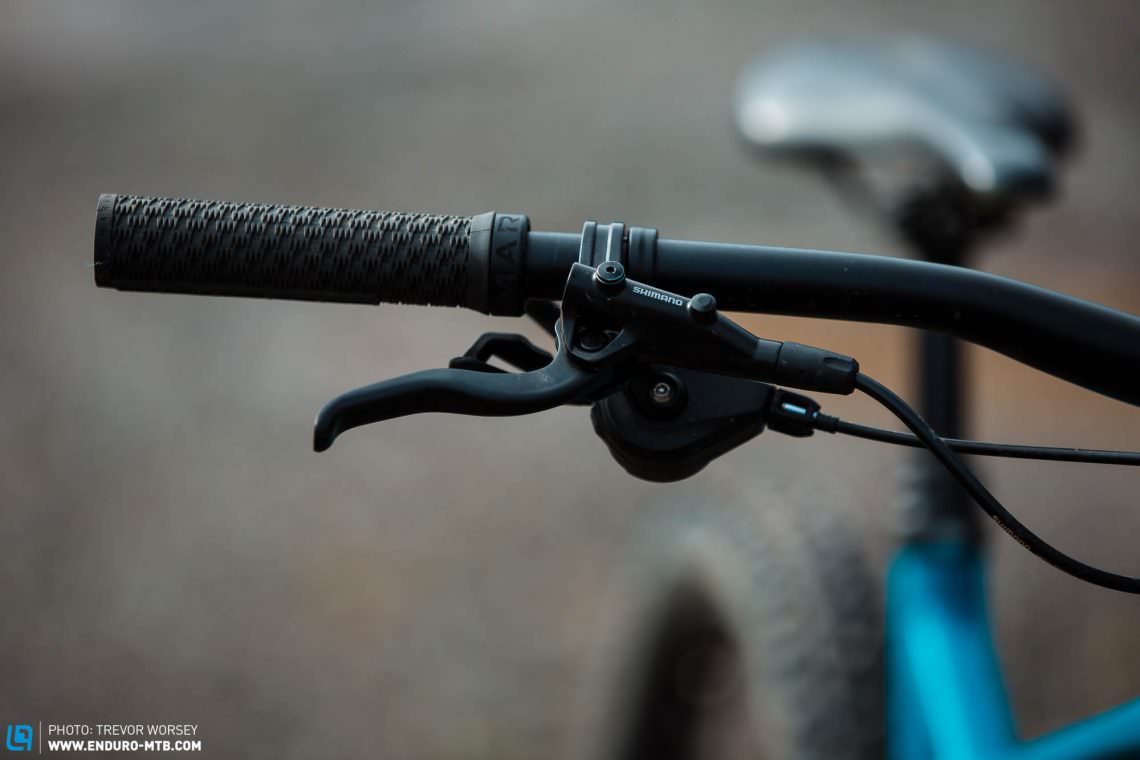


Wheels are Marin’s own brand ‘tubeless ready’ rims with a 29 mm inner width, running Vee Tire Co, Flow Snap 27.5 2.35 Tackee compound. The drivetrain consists of a paired Shimano SLX 12 speed rear derailleur and shift lever, with a Sunrace 12 speed cassette and FSA GRID 32T crank and chainring. All the finishing kit is Marin’s own, with a 6061 780 mm handlebar and 35 mm stem. The build is completed with a X-Fusion Manic 150 mm (125 mm on the Small and 175 mm on the XL) dropper post.

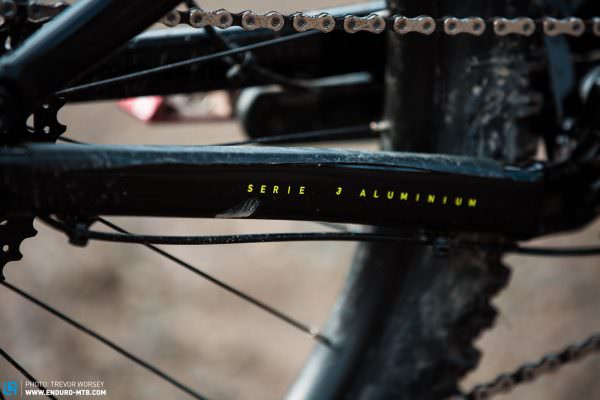

The Geometry of the Marin Hawk Hill
The Marin is a hard bike to put in a box, more of a short travel play bike than a hard charger, more pop than plough, As such it’s no surprise to see that Marin have stuck to relatively compact dimensions. Looking at the size Large as tested, a 465 mm reach, 1.192 mm wheelbase, 430 mm chainstays and 35 mm stem all add up to a compact feeling bike. The large is targeted at riders between 178 – 185 cm, but we think riders with long legs at the taller end of that spectrum would be better served with the XL. The angles of the Hawk Hill also point at agility over stability, with a 66.5 degree head angle, 74.3 degree seat tube and low 597.3 mm stack height.
| Size | S | M | L | XL |
|---|---|---|---|---|
| Top tube | 586.8 mm | 608.1 mm | 632.9 mm | 651.9 mm |
| Seat tube | 380 mm | 425 mm | 470 mm | 515 mm |
| Head tube | 110 mm | 120 mm | 125 mm | 130 mm |
| Head angle | 66.5° | 66.5° | 66.5° | 66.5° |
| Seat angle | 74.7° | 74.5° | 74.3° | 74.1° |
| BB Drop | 18 mm | 18 mm | 18 mm | 18 mm |
| Wheelbase | 1146.3 mm | 1168.3 mm | 1192.3 mm | 1214.3 mm |
| Reach | 425 mm | 445 mm | 465 mm | 485 mm |
| Stack | 583.6 mm | 588.2 mm | 597.3 mm | 601.9 mm |
On the trail, Marin Hawk Hill Review
Two testers put the Marin Hawk Hill through its paces on flowing trail centre (where the bike is most suited) and on shuttle enduro and DH trails that would frighten any 120 mm trail bike. At 180 and 184 cm, both testers felt the Marin quite compact in a size Large and both would have prefered a riser bar to help with the low stack, but that is personal preference. We found the bike performed best running quite firm, with around 25% sag and the fork damper Sweep (low-speed compression) adjuster set around half way for a firmer, racier and more precise ride feel.

Sitting on the Marin Hawk Hill 3, it immediately feels compact, flickable and excitable. The small wheels, low stack and compact rear end make the bike feel smaller than the numbers would suggest, great for playing. Almost instantly we started performing stoppies and fakies in the car park. Once on the hill, we discovered the trade-off for this unquestioned playfulness, If you like hanging on and ploughing fast straight lines, then the Hawk Hill is not for you. Flat out, the bike feels nervous and a little unplanted. While the geometry is more fun than race, the Vee Tire Flow Snap tires don’t help the stability, with a vague feel in fast turns. The playful and agile geometry made us want to drive hard on the front wheel through turns, but if we did, the front tire would soon run out of grip. Especially as we had to run a slightly higher pressure as the tires were running inner tubes. We would certainly recommend that owners remove the front Vee Snap Tire and keep it as a spare rear, fitting a tire with more side bite on the front like a 3C Maxxis Minion DHF or DHRII and setting both up tubeless.
The suspension is good though, providing a very active but predictable ride. Run a little firmer (25% sag) we did not blow through the travel too quickly, and it was easy to weight in turns. However, the slack seat angle and active suspension did increase the effort needed on the climbs. Continuing with the suspension, the RAIL damper of the Marcocchi Z2 fork is a highlight and feels very good, with a level of support and control that feels premium. However, we were not expecting to get bushing play on the Marzocchi Z2 forks within a few rides, with a noticeable clunk from the fork legs.
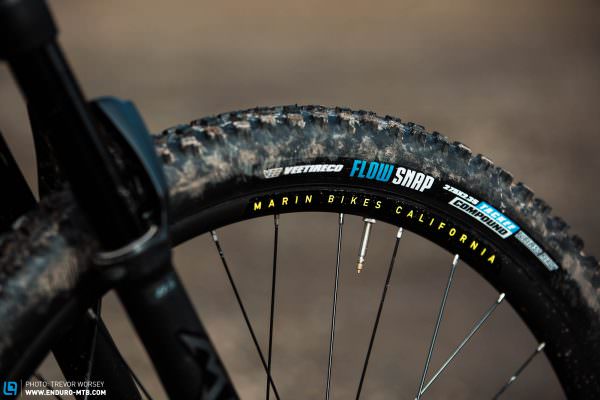

The four piston Shimano MT401 calipers scrub speed really well, and chapeau to Marin for fitting a big 203 mm front rotor. However, the long brake levers are not the most ergonomic and even though they have some adjustment, those with smaller hands may struggle to find a relaxed reach. The rest of the spec of the bike works well, yes some cost cutting has been done here and there, but for the price we cannot argue. Overall we had a good time on the Marin Hawk Hill 3, it’s great fun for messing around and playing with the trail and will not break the bank. With the compact rear end, it feels like a great option for the new ‘50:01’ jib generation. As an allrounder though, it faces better competition, even from within the Marin stable itself.
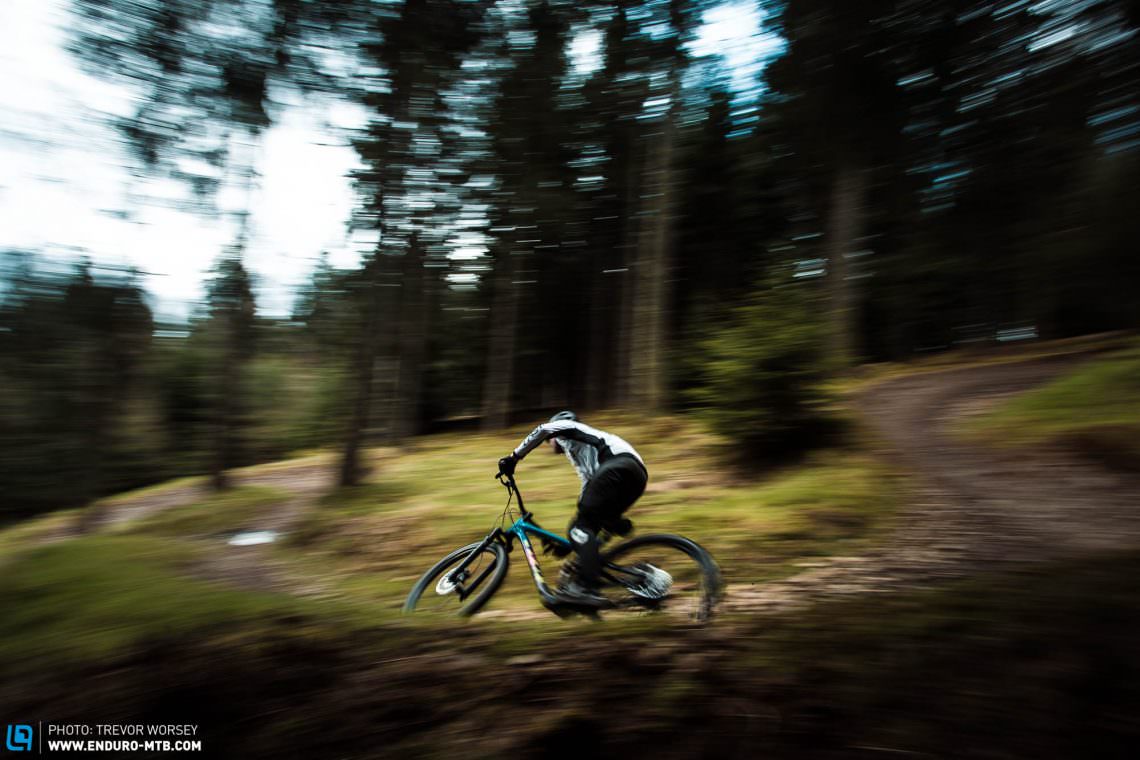
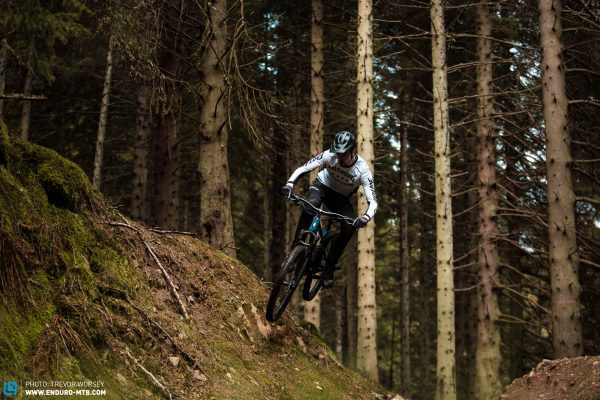
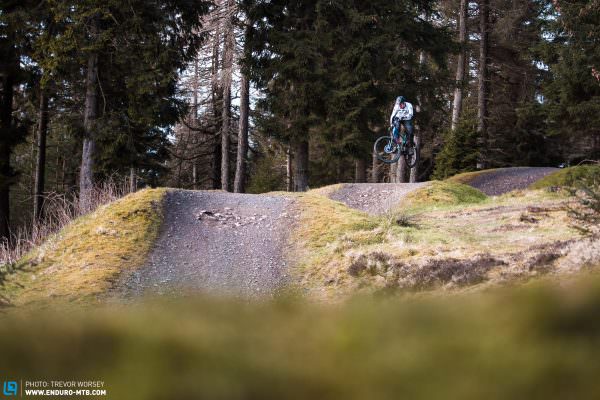
Marin Hawk Hill 3 Vs the Marin Rift Zone 3
So the Marin Hawk Hill 3 has a few faults, but taking the price into consideration, it is a laugh a minute play bike. However, there’s a problem, the similarly specced 29 inch wheeled Marin Rift Zone 3. While we have not ridden the most recent bike, the previous Rift Zone model we tested was a pure trail firework. With 130/125 mm of travel, a similar geometry, steeper seat tube and bigger 29 inch wheels, we would choose the Rift Zone 3 every time. The Rift Zone still focuses on fun and engaging handling but benefits from the increased stability and charging ability of the bigger wheels.
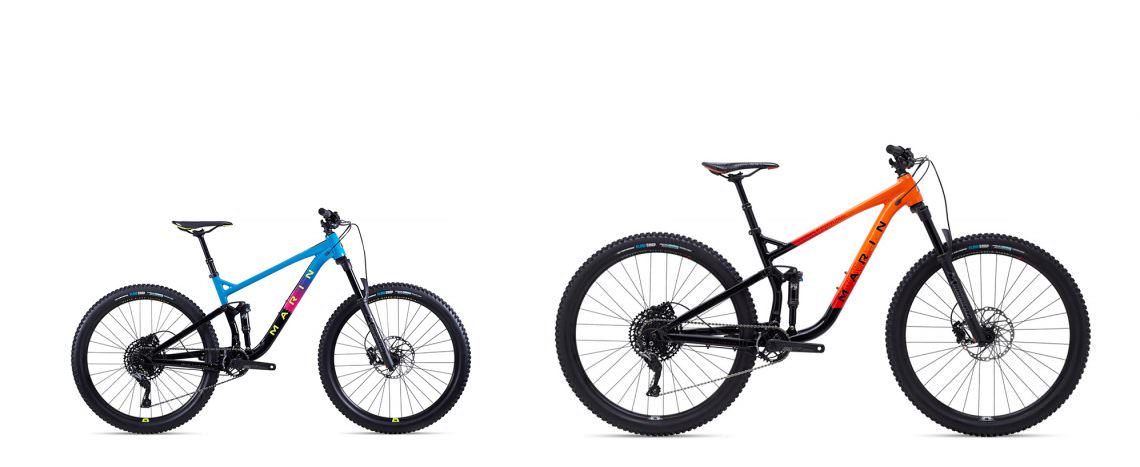
Conclusion
The Marin Hawk Hill 3 is everything Marin promised, light, flickable with a compact and playful feel. Those looking for a flat-out charger will find it nervous at full speed, but with the addition of tires that suit your riding style and a few small upgrades, it would make a fun bike for those who focus on playing with the trail instead of racing over it. However, for riders looking for more of an all-rounder, we would buy the Marin Rift Zone 3 every time.
For more information head to marinbikes.com
Tops
- A well built frame that would benefit future upgrading
- Agile and playful handling, great if you have trails filled with jumps and features
- A lot of smiles for not much money
Flops
- Compact frame feels nervous at high speeds
- Front tire lacks bite in hard corners
- For most riders, the Rift Zone 3 is a better bike
Did you enjoy this article? If so, we would be stoked if you decide to support us with a monthly contribution. By becoming a supporter of ENDURO, you will help secure a sustainable future for high-quality mountain bike journalism. Click here to learn more.
Words & Photos:









